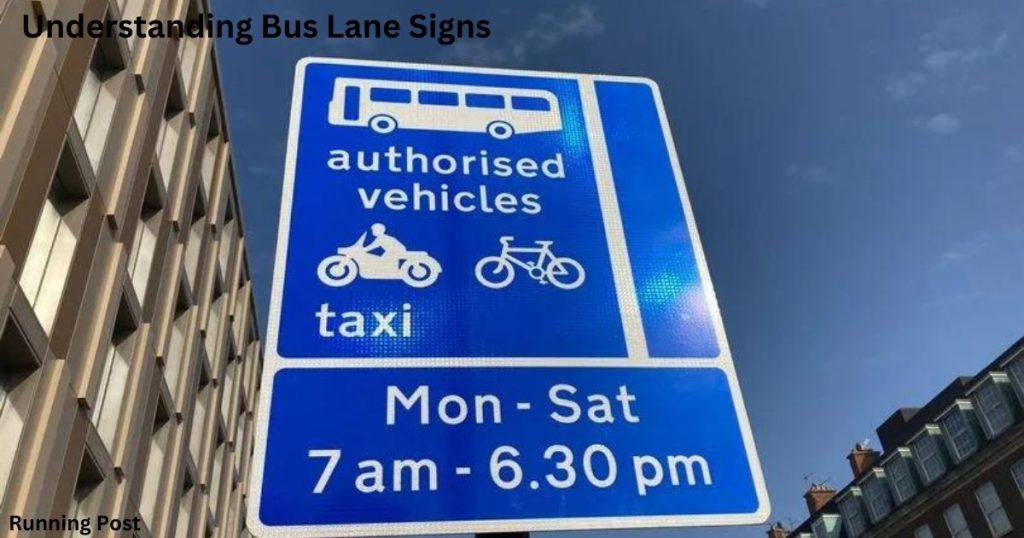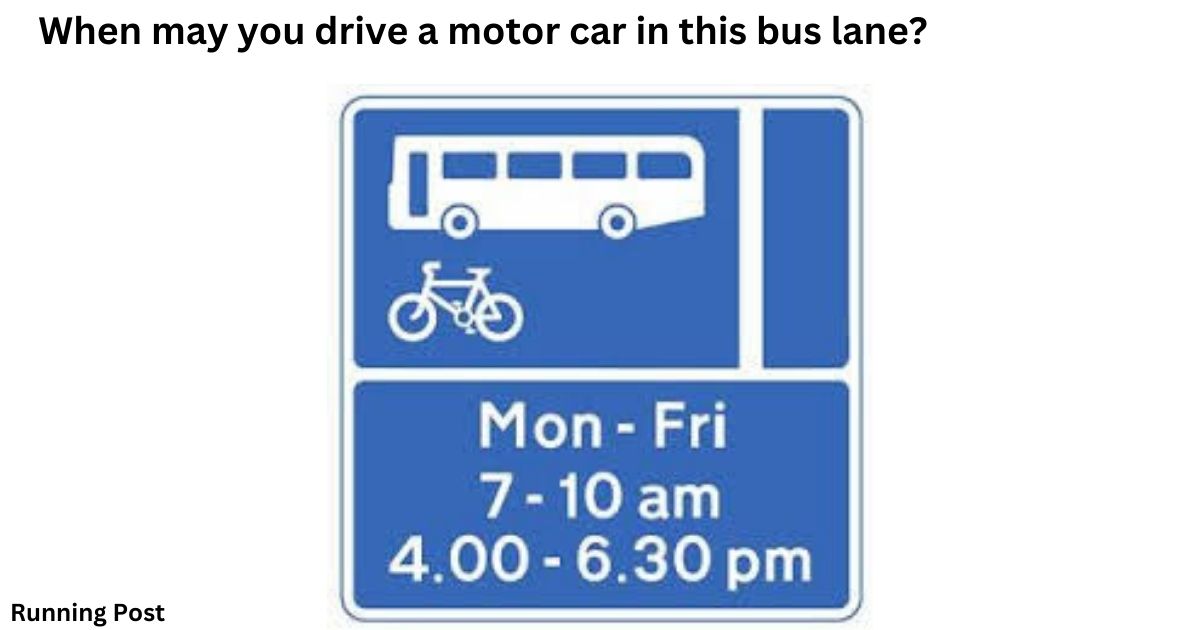| A: Outside its hours of operation | B: To overtake slow-moving traffic | C: You may not use it at any time | D: To get to the front of a traffic queue |
Introduction
Purpose of the Article
Understanding the rules surrounding bus lanes is crucial for every driver. Bus lanes are designated areas on the road meant primarily for public transportation, such as buses and sometimes taxis. They are created to improve public transport efficiency by providing them with a clear and less congested route. However, the regulations regarding who can use these lanes and when can be complex and vary depending on location. This article aims to clarify when you can drive a motor car in a bus lane, focusing on general rules and specific regulations in the UK and Queensland (Qld), Australia. By grasping these rules, drivers can avoid fines, ensure smoother traffic flow, and contribute to the effectiveness of public transport systems.
Importance of Understanding Bus Lane Rules
Bus lanes are not just traffic management tools; they play a significant role in reducing overall congestion and promoting the use of public transport. By knowing when and how these lanes can be used, drivers can avoid unnecessary penalties and contribute to the smooth functioning of traffic systems. Misunderstanding or ignoring bus lane rules can lead to fines and increased congestion, undermining the very purpose these lanes serve. Therefore, having a clear understanding of bus lane regulations helps drivers navigate the roads more efficiently and responsibly.
General Rules for Driving in Bus Lanes
When May You Drive a Motor Car in This Bus Lane?
Driving in bus lanes is generally restricted to vehicles that are authorized to use them. However, there are certain exceptions and specific times when other vehicles, such as private cars, can legally enter these lanes. The most common exception is when the bus lane is not in operation. This means that outside the designated hours of operation, which are usually displayed on signs, other vehicles may drive in the bus lane. Understanding these hours is crucial for avoiding fines and navigating city streets effectively.
Bus Lane Regulations in the UK
When Can You Drive in a Bus Lane in the UK?
In the UK, bus lanes are subject to strict regulations to ensure that public transport operates efficiently. Generally, private vehicles are prohibited from using bus lanes during their operational hours. However, there are exceptions such as during late nights or early mornings when bus lanes may not be in operation. Drivers must check local signage and markings to understand the specific times when bus lanes are active.
Legal Exceptions
There are several legal exceptions that allow vehicles other than buses to use bus lanes. These exceptions can include taxis, bicycles, and sometimes delivery vehicles, depending on local regulations. In some areas, private vehicles may also be permitted to use bus lanes for short distances to make turns or enter a side road. It’s important for drivers to be aware of these exceptions to avoid penalties and ensure they are using the road correctly.
Specific Time Restrictions
Bus lanes typically have clearly marked hours of operation, which are indicated on road signs. These times can vary from one area to another, and they are usually enforced during peak traffic hours to maximize the effectiveness of the bus lanes. Drivers should be attentive to these time restrictions, as driving in a bus lane outside of these hours may be permissible, but during operational hours, the rules are strict.
Understanding Bus Lane Signs

What Do the Signs Indicate at a Bus Lane?
Bus lane signs are designed to clearly communicate when and how the lanes can be used. These signs typically display times of operation, any exceptions, and restrictions related to the lane. Understanding these signs is crucial for compliant driving. For example, a sign might indicate that the bus lane is in operation from 7:00 AM to 10:00 AM and 4:00 PM to 7:00 PM on weekdays, outside of which other vehicles may use the lane.
Types of Signs
There are several types of signs used to regulate bus lanes. Common signs include those indicating the hours of operation, restrictions for specific vehicle types, and penalties for non-compliance. Some signs may also include supplementary plates or symbols to provide additional information. Each type of sign serves a specific purpose and is designed to help drivers understand the rules governing the bus lane.
What Each Sign Means
Each bus lane sign has a specific meaning that drivers must interpret correctly. For instance, a sign with a bus symbol and specific hours indicates that only buses are allowed in the lane during those hours. Signs with additional symbols may indicate exceptions for certain types of vehicles. Understanding these signs helps drivers make informed decisions about when and how they can use the bus lane.
Common Misunderstandings
There are several common misunderstandings regarding bus lane signs. One frequent issue is drivers misinterpreting the operational hours or ignoring the specific vehicle restrictions indicated on the signs. Another common problem is confusion over the exceptions allowed in certain bus lanes. Addressing these misunderstandings involves clear communication and regular updates to road signage.
You Also Like It:
Where will you see these red and white markers?
Who’s responsible for paying the vehicle excise duty (road tax)?
Why are vehicles fitted with rear fog lights?
Driving in Bus Lanes in Queensland (Qld)
What Is the Maximum Distance You Can Drive in the Bus Lane to Overtake a Vehicle in Front of You in Qld?
In Queensland, the maximum distance a vehicle can drive in a bus lane to overtake another vehicle is generally limited to the length necessary to complete the maneuver safely. This distance is often defined by local traffic regulations and can vary depending on the specific road and bus lane. Drivers must ensure that their actions do not interfere with the primary purpose of the bus lane, which is to provide a clear path for public transport.
Legal Limitations
Legal limitations on driving in bus lanes to overtake are designed to balance the needs of private vehicles with the primary function of the bus lane. These limitations are enforced to prevent misuse of the bus lanes and to ensure that public transport is not unduly delayed. Drivers should be aware of these limitations to avoid penalties and ensure compliance with local traffic laws.
Practical Examples
Practical examples of driving in a bus lane to overtake might include scenarios where a vehicle needs to pass a slow-moving vehicle or prepare to turn left. In such cases, drivers must ensure they are not occupying the bus lane for an extended period and must return to their original lane as soon as the maneuver is complete. These examples illustrate the importance of understanding both the legal and practical aspects of using bus lanes in Queensland.
How Bus Lanes Work
How Do Bus Lanes Work?
Bus lanes are designed to provide dedicated space for public transport vehicles, allowing them to bypass congestion and maintain a consistent schedule. By reserving lanes exclusively for buses, traffic flow can be improved, and public transport can operate more efficiently. Understanding how bus lanes work helps drivers navigate these areas effectively and contributes to a more organized traffic system.
Purpose of Bus Lanes
The primary purpose of bus lanes is to prioritize public transportation and reduce travel time for buses. By separating buses from other traffic, these lanes help improve the reliability and attractiveness of public transport options. This, in turn, can lead to fewer cars on the road and reduced overall traffic congestion.
Impact on Traffic Flow
Bus lanes have a significant impact on traffic flow by reducing the number of vehicles in general traffic lanes. This can lead to smoother traffic movement and less congestion during peak hours. Additionally, bus lanes can encourage more people to use public transport, further easing road congestion.
Enforcement and Penalties
Enforcement of bus lane regulations is typically managed through cameras and traffic wardens who monitor compliance. Penalties for unauthorized use of bus lanes can include fines and points on the driver’s license. Understanding the enforcement mechanisms helps drivers adhere to the rules and avoid penalties.
Conclusion About When may you drive a motor car in this bus lane?
Summary of Key Points
In summary, understanding when and how you can drive in bus lanes is essential for avoiding fines and contributing to efficient traffic flow. Key points include recognizing the operational hours of bus lanes, interpreting signs correctly, and knowing specific regulations for different regions, such as the UK and Queensland.
Final Tips for Navigating Bus Lanes
To navigate bus lanes effectively, always pay attention to road signs, adhere to operational hours, and be aware of local exceptions and regulations. By following these guidelines, you can ensure compliance with traffic laws and help maintain the efficiency of public transport systems.
You Also Like It:
Which vehicle will use a blue flashing beacon?
Releated Posts
MAB Instructor Certification: Your Gateway to Professional Crisis Management Leadership
In today’s fast-evolving professional environments—especially in healthcare, mental health, education, and corrections—conflict and aggression can arise without warning.…
Freewayget.com: Your Ultimate Platform for Deals, Discounts, and Digital Products
Introduction to Freewayget.com In today’s fast-paced digital world, finding reliable platforms that offer authentic discounts, deals, and digital…
Affordable & Fast Embroidery Digitizing Services in Your Area
Embroidery digitizing services provide corporations, designers, and people with brilliant embroidery-equipped designs by means of changing art work…
Introduction to hdhub4u nit
In this article, we will delve into the details of hdhub4u nit, exploring its features, benefits, and why…

















